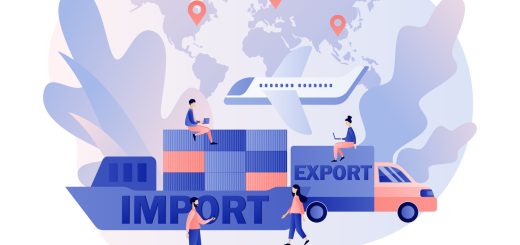Optimize Your China Consolidation Strategy for Efficiency and Cost Savings: A Guide for European & North American Sellers
Introduction
For ecommerce sellers in Europe and North America sourcing products from China, efficient consolidation of goods is critical to reducing costs, minimizing delays, and ensuring compliance with customs regulations. Whether you’re shipping to Amazon FBA warehouses, third-party logistics (3PL) providers, or your own fulfillment centers, a well-optimized consolidation strategy can save thousands in logistics fees, avoid costly mistakes, and accelerate time-to-market. This guide covers everything you need to know about refining your China-to-US/EU consolidation process, from selecting the right freight forwarders to leveraging technology and avoiding common pitfalls.
1. Why Consolidation Matters for International Sellers
Consolidation involves combining multiple shipments from different suppliers into a single bulk shipment to your destination warehouse. This approach offers several advantages:
- Cost Efficiency: Lower per-unit shipping rates compared to multiple small packages.
- Faster Transit Times: Reduced handling and fewer customs clearances.
- Scalability: Easier to manage growth as your business expands.
- Compliance Control: Streamlined documentation and adherence to import regulations.
For sellers using Amazon FBA, proper consolidation can also help avoid long-term storage fees by syncing arrival times with sales forecasts.
2. Key Steps to Optimize Your China Consolidation Strategy
A. Choose the Right Freight Forwarder
A reliable freight forwarder (or consolidator) is the backbone of your strategy. Look for partners with:
- Experience in Ecommerce Logistics: Familiarity with Amazon FBA, Shopify, and other platforms.
- Global Network: Strong presence in China (Shenzhen, Yiwu, Guangzhou) and destinations in the US/EU.
- Transparent Pricing: Clear breakdown of fees (ocean freight, customs, duties, handling).
- Tech Integration: Real-time tracking, API access, and inventory management tools.
Popular Options:
- Freightos: A digital platform comparing quotes from vetted freight forwarders.
- ShipBob, Flexport, or DHL Supply Chain: Full-service providers offering end-to-end solutions.
- Local Agents: Check reviews on Trustpilot or LinkedIn for niche specialists.
B. Leverage Consolidation Centers in China
Instead of shipping directly from factories, use a consolidation hub in China to:
- Gather goods from multiple suppliers.
- Inspect and repack items for consistency.
- Label and prepare shipments for customs.
Top Consolidation Cities:
- Shenzhen/Yiwu: Ideal for electronics, apparel, and general goods.
- Ningbo/Shanghai: Larger ports for bulkier items.
C. Optimize Shipping Routes and Methods
- Ocean Freight vs. Air Freight:
- Ocean: Cheaper for large volumes but slower (25+ days from China to US/EU).
- Air: Faster (5-7 days) but pricier; use for high-demand items.
- Hybrid Approach: Use ocean freight for stable inventory and air freight for urgent restocks.
- Incoterms: Prefer DDP (Delivered Duty Paid) or DAP (Delivered at Place) to simplify responsibility.
D. Master Customs Compliance
Navigating US/EU customs requires attention to detail:
- Harmonized System (HS) Codes: Ensure accurate classification of goods to avoid tariffs.
- Documentation: Include commercial invoices, packing lists, and certificates of origin.
- Duties & Taxes: Use a tariff calculator (e.g., TradeTariff.com) or consult a customs broker.
- Rules of Origin: If selling in the EU, check if your products qualify for preferential tariffs under agreements like CETCA (China-EU).
E. Implement Technology for Visibility
Tools like Tracktry, Freightos, or ShipStation allow you to:
- Track shipments in real time.
- Automate customs filings.
- Analyze data to predict transit times and costs.
- Integrate with Amazon Seller Central or Shopify for seamless inventory updates.
F. Audit and Iterate
Regularly review:
- Shipping Costs: Compare rates quarterly to avoid overpaying.
- Supplier Lead Times: Align production schedules to reduce warehouse wait times.
- Inventory Levels: Use software like RestockPro to prevent overstocking or stockouts.
3. Case Study: A Successful Consolidation Strategy
Example: A mid-sized pet accessories seller based in the US sources products from five Chinese manufacturers. By partnering with a freight forwarder in Shenzhen, they:
- Consolidated monthly shipments into a single container.
- Saved 30% on shipping costs vs. individual parcels.
- Used a customs broker to pre-clear goods, reducing port delays.
- Synced arrival with Amazon’s peak Q4 season, avoiding long-term storage fees.
Result: Annual savings of $12,000 and a 20% reduction in time-to-market.
4. Common Mistakes to Avoid
- Skipping Quality Checks: Uninspected goods may arrive damaged or mismatched.
- Ignoring Insurance: Marine insurance protects against lost/damaged shipments.
- Underestimating Duties: Use tools like the Harmonized Tariff Schedule (HTS) to calculate costs.
- Overlooking Incoterms: Clarify responsibility for freight, insurance, and customs.
5. Future Trends in Consolidation
- Sustainability: Eco-friendly packaging and carbon-neutral shipping options.
- Automation: AI-driven route optimization and predictive analytics.
- Regionalization: Using nearby warehouses (e.g., Amazon’s European fulfillment centers) to reduce lead times.
Conclusion
Optimizing your China consolidation strategy requires careful planning, reliable partners, and ongoing refinement. By focusing on cost efficiency, compliance, and technology, you can streamline logistics, scale your business, and stay competitive in the ecommerce landscape. Start by auditing your current process and exploring tools like Freightos or ShipBob to upgrade your workflow.

